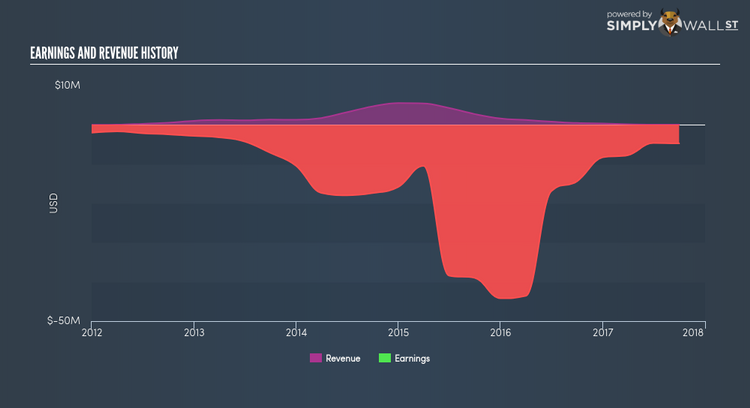Can Torchlight Energy Resources Inc (NASDAQ:TRCH) Improve Your Portfolio Returns?

If you are looking to invest in Torchlight Energy Resources Inc’s (NASDAQ:TRCH), or currently own the stock, then you need to understand its beta in order to understand how it can affect the risk of your portfolio. Every stock in the market is exposed to market risk, which arises from macroeconomic factors such as economic growth and geo-political tussles just to name a few. This is measured by its beta. Not all stocks are expose to the same level of market risk, and the broad market index represents a beta value of one. A stock with a beta greater than one is expected to exhibit higher volatility resulting from market-wide shocks compared to one with a beta below one.
See our latest analysis for Torchlight Energy Resources
An interpretation of TRCH’s beta
Torchlight Energy Resources’s beta of 0.79 indicates that the company is less volatile relative to the diversified market portfolio. The stock will exhibit muted movements in both the downside and upside, in response to changing economic conditions, whereas the general market may move by a lot more. TRCH’s beta implies it may be a stock that investors with high-beta portfolios might find relevant if they wanted to reduce their exposure to market risk, especially during times of downturns.
Does TRCH’s size and industry impact the expected beta?
A market capitalisation of USD $75.26M puts TRCH in the category of small-cap stocks, which tends to possess higher beta than larger companies. Furthermore, the company operates in the oil and gas industry, which has been found to have high sensitivity to market-wide shocks. Therefore, investors may expect high beta associated with small companies, as well as those operating in the oil and gas industry, relative to those more well-established firms in a more defensive industry. It seems as though there is an inconsistency in risks portrayed by TRCH’s size and industry relative to its actual beta value. There may be a more fundamental driver which can explain this inconsistency, which we will examine below.
Can TRCH’s asset-composition point to a higher beta?
An asset-heavy company tends to have a higher beta because the risk associated with running fixed assets during a downturn is highly expensive. I test TRCH’s ratio of fixed assets to total assets in order to determine how high the risk is associated with this type of constraint. With a fixed-assets-to-total-assets ratio of greater than 30%, TRCH appears to be a company that invests a large amount of capital in assets that are hard to scale down on short-notice. As a result, this aspect of TRCH indicates a higher beta than a similar size company with a lower portion of fixed assets on their balance sheet. However, this is the opposite to what TRCH’s actual beta value suggests, which is lower stock volatility relative to the market.
What this means for you:
Are you a shareholder? You could benefit from lower risk during times of economic decline by holding onto TRCH. Take into account your portfolio sensitivity to the market before you invest in the stock, as well as where we are in the current economic cycle. Depending on the composition of your portfolio, TRCH may be a valuable stock to hold onto in order to cushion the impact of a downturn. For next steps, take a look at TRCH’s outlook to see what analysts are expecting for the stock on our free analysis plaform here.
Are you a potential investor? Depending on the composition of your portfolio, TRCH may be a valuable addition to cushion the impact of a downturn. Potential investors should look into its fundamental factors such as its current valuation and financial health. Take into account your portfolio sensitivity to the market before you invest in TRCH, as well as where we are in the current economic cycle. Continue your research on the stock with our free fundamental research report for TRCH here.
To help readers see pass the short term volatility of the financial market, we aim to bring you a long-term focused research analysis purely driven by fundamental data. Note that our analysis does not factor in the latest price sensitive company announcements.
The author is an independent contributor and at the time of publication had no position in the stocks mentioned.

